35mm Sprocket Hole Panoramic Photographs
by Darin Barry in Design > Photography
21482 Views, 70 Favorites, 0 Comments
35mm Sprocket Hole Panoramic Photographs
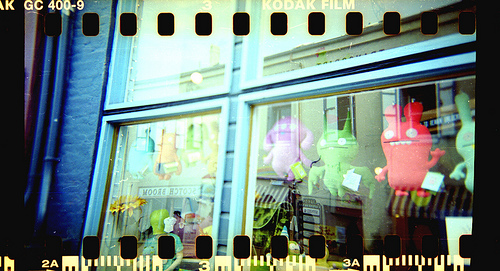
How do photographers get those wide images that bleed through the edges of the negative, showing the sprocket holes? It's a technique that allows your to create stunning panoramic images -- these little bits of film become art in themselves. These photographs are achieved by loading 35mm film into a 120 medium format camera. This tutorial was written with the Holga in mind, but the same technique works for other 120 cameras as well.
You Will Need....
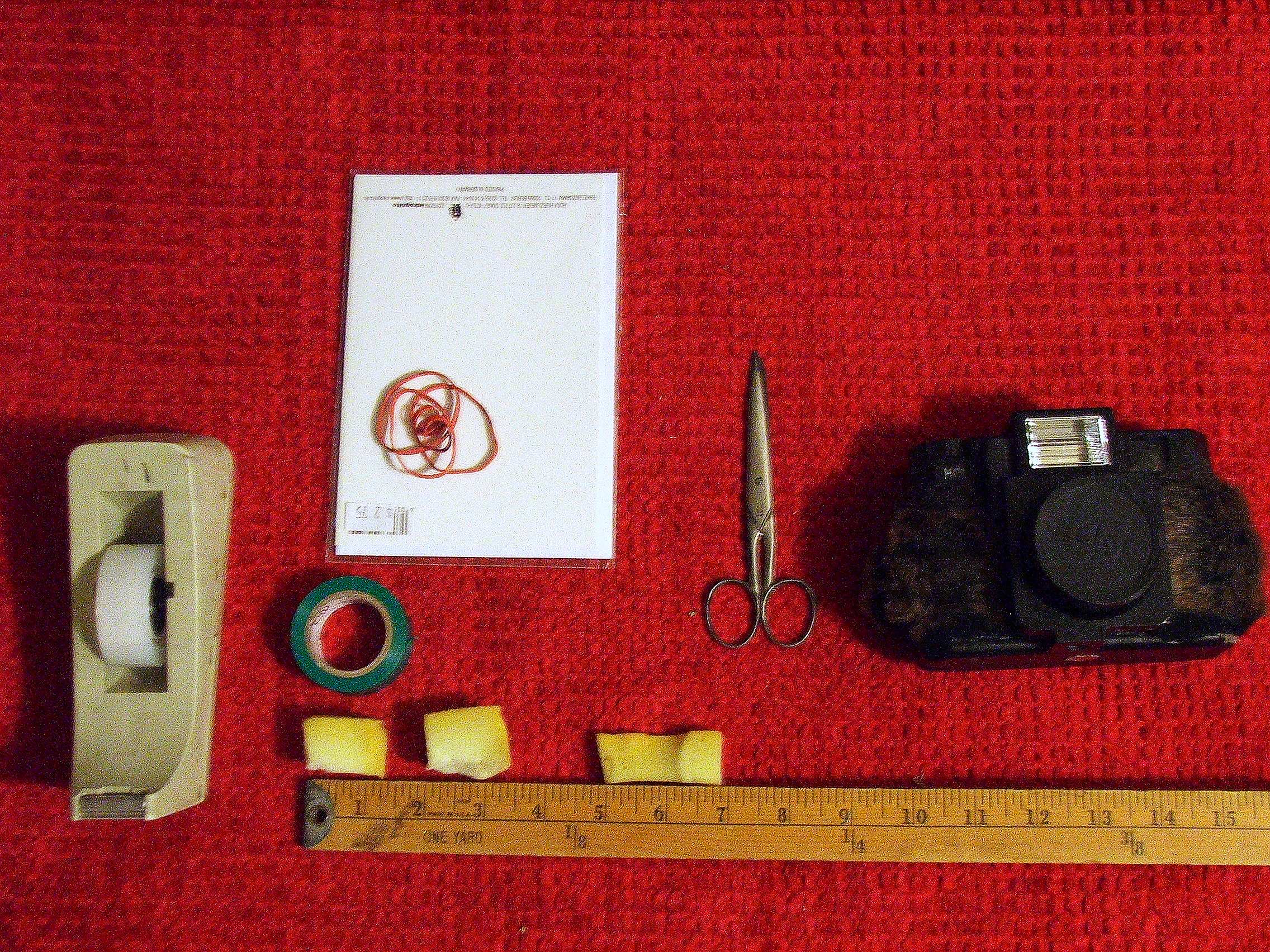
2 pieces of memory or regular mattress sort of foam cut into roughly 1 1/4 inch squares, 1 piece of foam cut thinly to measurement of the left spool compartment length and width, 1 spool of black electricians or gaffers tape, 4 medium size rubber bands, scissors, your Holga or similar camera, clear cellophane tape. (Photo. 1)
Remove and Prepare Your Uptake Spool.
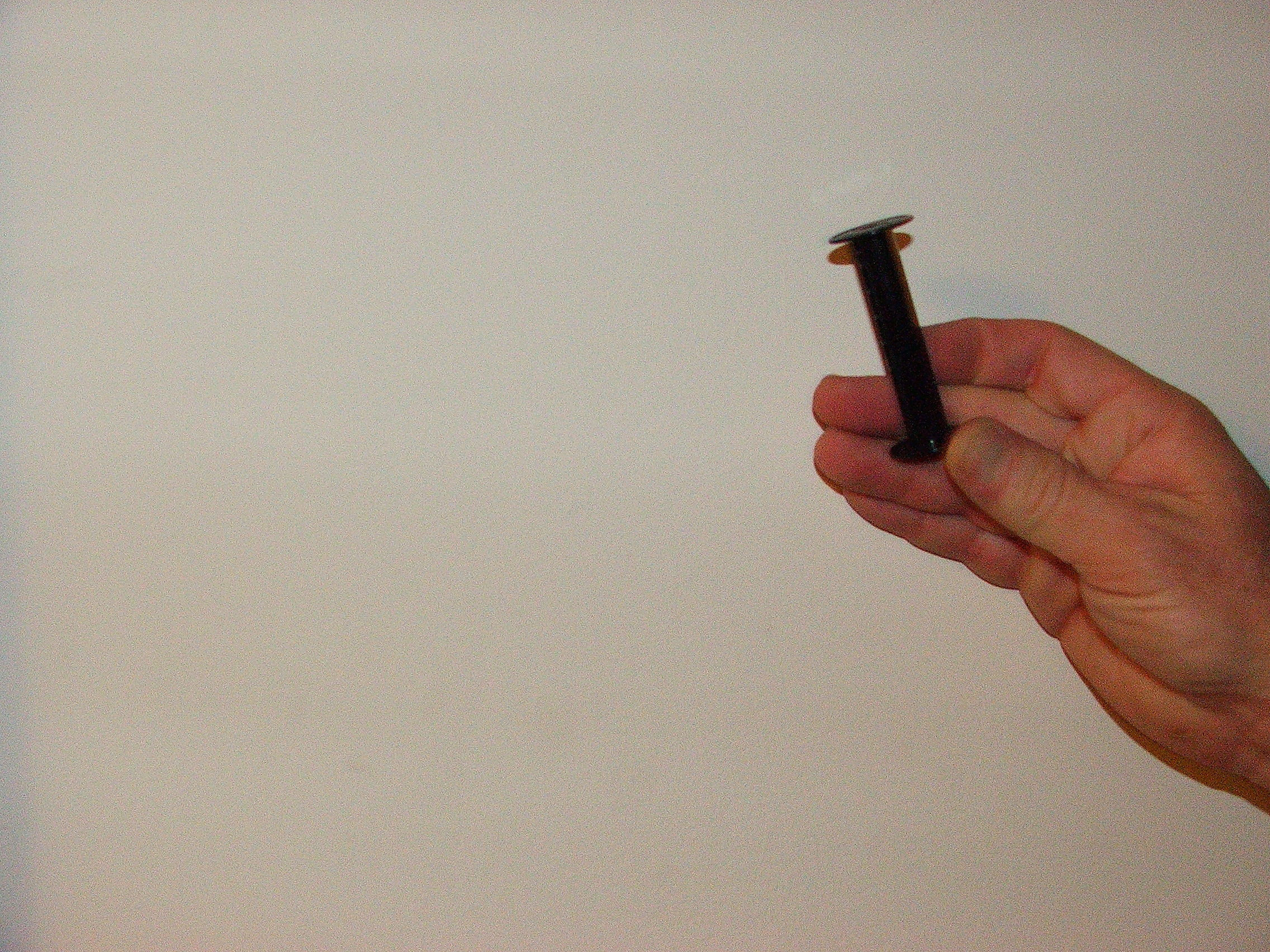
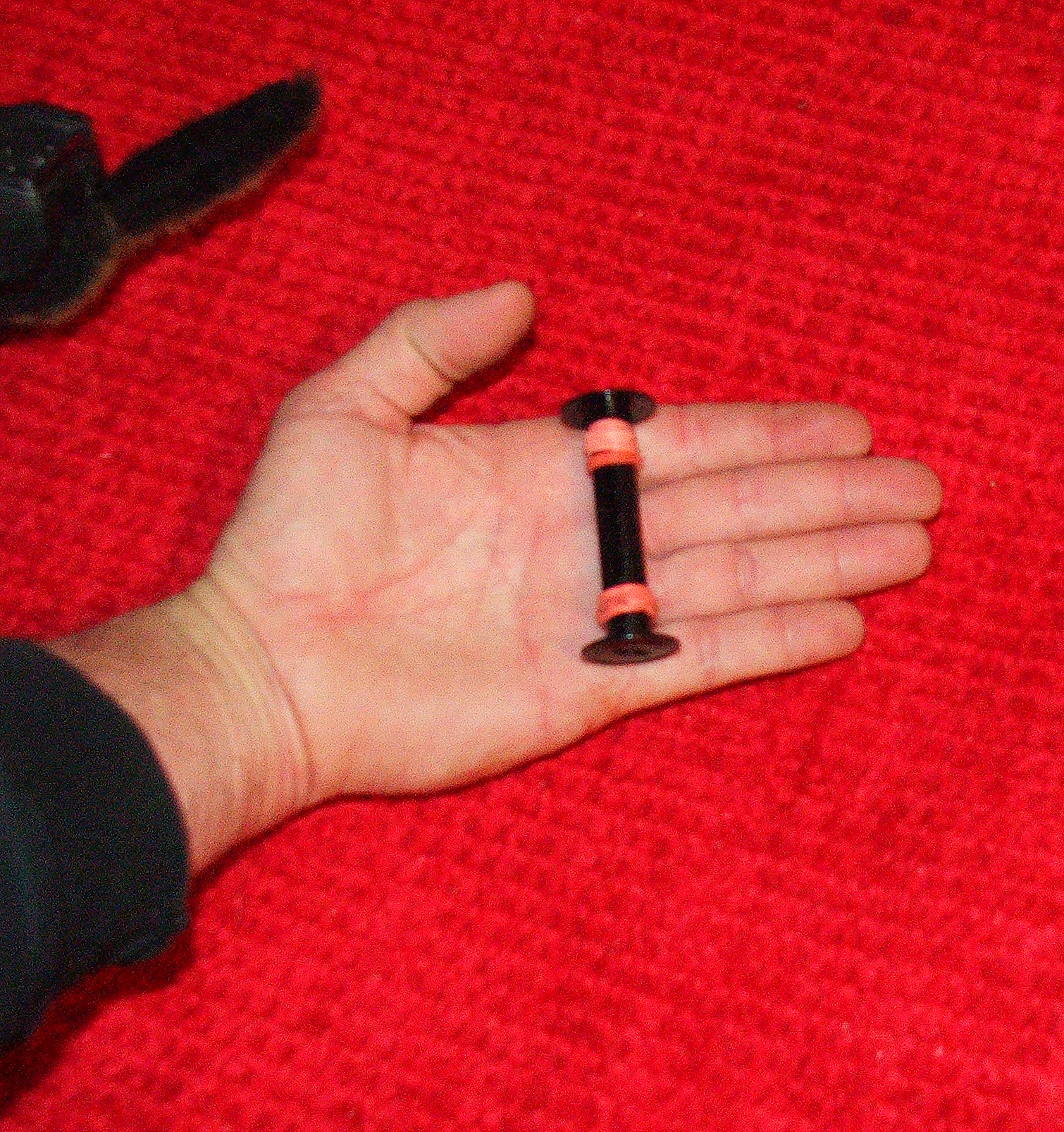
Remove the back of your Holga using the little metal clips on each side that slide up, if you still have clips and haven’t yet chucked them in favor of Velcro (article to come), and remove the take-up spool. (photo 2) Create your take-up spool by overlapping rubber bands to a thickness of about a 1/4 of an inch, on each side of the spool to create a barrier so the 35mm film cannot travel up or down the spool of the uptake spool. Measure the width of the 35mm film and center your barriers on the spool so that the film edges (sprocket sides) meet near the barriers. Adjust to width if necessary - doesn’t have to be perfect, but make sure your rubber band barriers are not narrower than the film. Place it in the take up real compartment on the left of the camera.(photo 3)
Foam the Film Compartment

First, the single longer piece should be pressed into the bottom of the spool compartment. Install a pre-cut piece of foam on the top of the compartment and one at the bottom.
Positioning Film
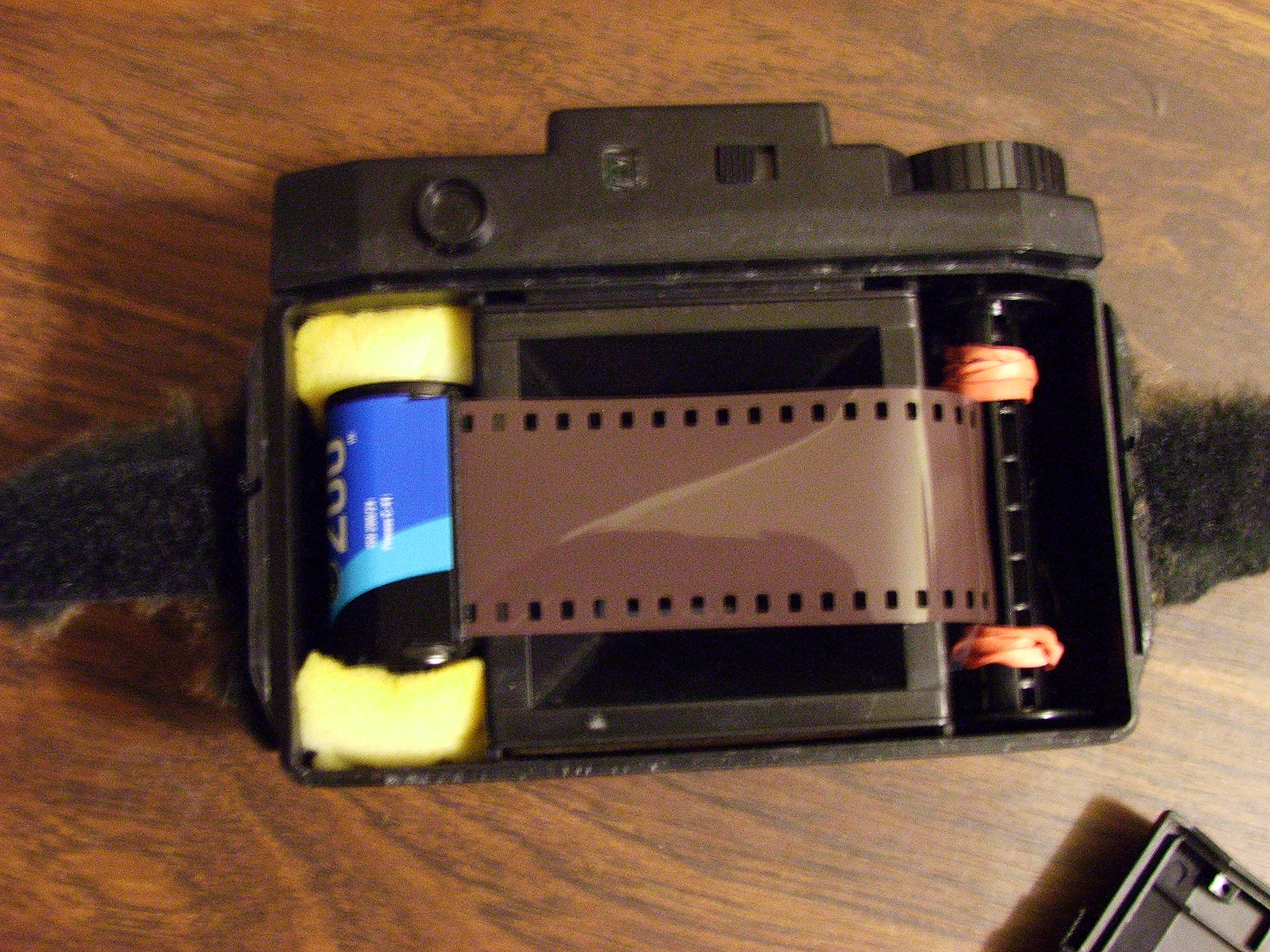
Place 35mm film, flat side up, cylindrical part of the canister down, with the knobby protrusion of the 35mm film canister pointing to the bottom of the camera. The film canister should fit snuggly between the two pieces of foam. Pull lead of 35mm film out of canister about six inches and fasten by guiding through the spool of the take up reel and affixing it with clear cellophane tape. The film should be centered horizontally behind the cameras aperture. (photo 6)
VERY Important - Seal Film Advance Window From Light.
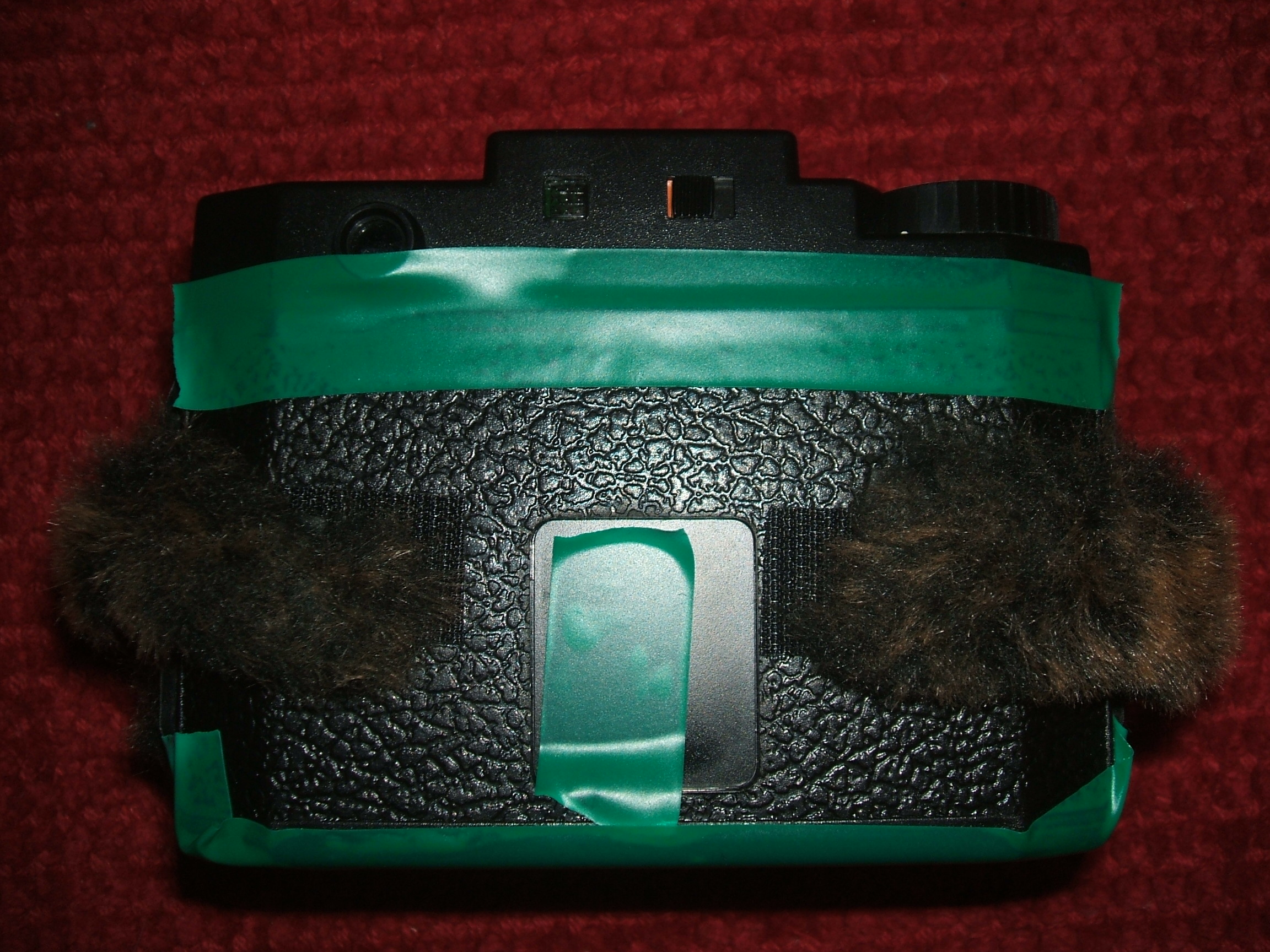
IF YOU DON'T BLOCK THE WINDOW WITH TAPE NOT ONE OF YOUR PHOTOS WILL TURN OUT:120 film has a light blocking back, 35mm does not.
Put the back on and tape the see through window up with gaffers or black electricians’ tape covering both sides of the window. Then, tape your Holga up for light leaks as you would or would not normally do.Give the uptake reel three full revolutions, and you are on the first frame and ready to shoot.
The tricky part is knowing what frame your camera is on, you just blocked the light window with tape. Count clicks of the take up knob. 25 clicks between frames is about right for a 24 exposure roll of film, so listen carefully as you turn the take up knob.
Put the back on and tape the see through window up with gaffers or black electricians’ tape covering both sides of the window. Then, tape your Holga up for light leaks as you would or would not normally do.Give the uptake reel three full revolutions, and you are on the first frame and ready to shoot.
The tricky part is knowing what frame your camera is on, you just blocked the light window with tape. Count clicks of the take up knob. 25 clicks between frames is about right for a 24 exposure roll of film, so listen carefully as you turn the take up knob.
Removing Film and Special Processing Instructions.
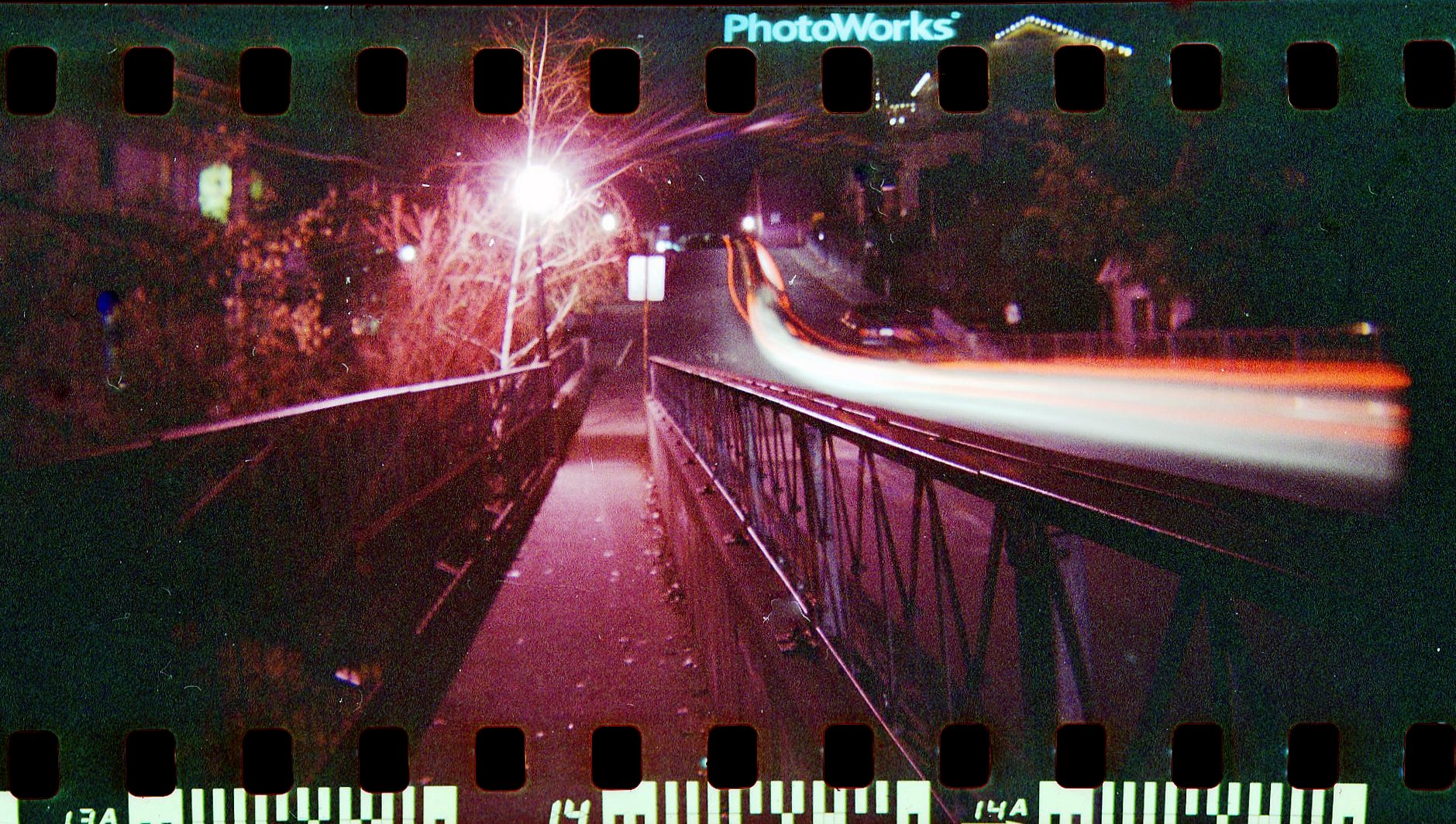

And now the trickier part, you will have to unload the film completely in the dark or use a changing bag. You will be able to easily roll your 35 mm film back into it’s canister by turning the knob-protrusion on the canister, you should know how to do this with a dummy roll before you get frustrated in the dark and blow a lot of work by flipping the lights on.
Finally, Process with special instructions ‘DO NOT CUT NEGATIVES”. Then either have your negatives scanned or do it yourself to print or use on the web.
Be cool to your local film processors about not sending your roll in with tape still stuck on it, it jams the machines.
2011 Creative Commons by Darin Barry
Finally, Process with special instructions ‘DO NOT CUT NEGATIVES”. Then either have your negatives scanned or do it yourself to print or use on the web.
Be cool to your local film processors about not sending your roll in with tape still stuck on it, it jams the machines.
2011 Creative Commons by Darin Barry